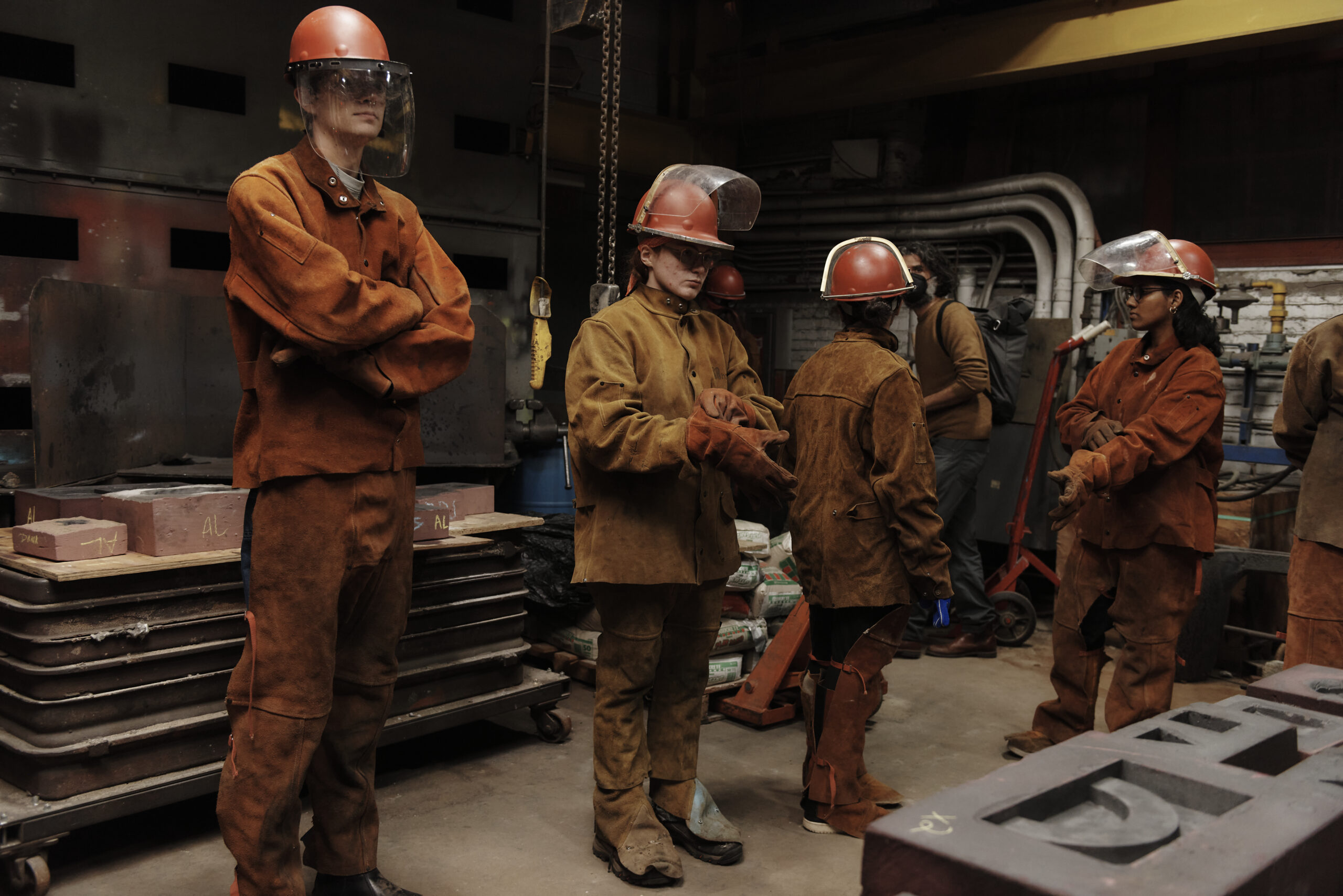As a Sculpture BFA student, you’ll hone your creative practice in whatever medium – or mediums – you choose.
Sculpture students have the opportunity to work with a wide range of materials, including wood, different types of metals, clay, plaster, mixed media, glass, fiber, stone, and video. In foundational classes and advanced seminars, students learn a wide variety of sculptural processes, including bronze and aluminum casting, mold making, chasing, cold fabrication, and wood carving. Emphasis is on personal expression and technical proficiency.

Form to Fire class in the Foundry with Marjee Levine.

Courses cover topics such as anatomy, figure modeling, foundry, mold making, carving, woodworking, welding, kinetic art, digital 2D to 3D processes, portraiture, and installation. Students learn sculptural technique as well as conceptual concerns related to sculpture. Classes also explore the role of art in community, the history of sculpture, presentation and site possibilities, and idea development.
Junior and Senior major studios offer individual mentor time with faculty, as well as group critiques with a team of faculty and guest critics. Sculpture faculty are working artists who bring a diverse array of approaches to making sculpture. By graduation, students are expected to have developed a coherent body of work based on sophisticated techniques and a maturing sense of aesthetic direction.
Alumni Success
Hands-on experience with tools and processes prepare our students to be valuable employees in a host of industries: high-end architectural metalworking; museum exhibition construction; fine artists and craftspeople; and cabinetry and furniture making, to name just a few. Overall, MassArt’s Sculpture program offers a rigorous and enriching education in sculpture, providing students with the knowledge, skills, and creative vision to pursue their artistic aspirations.
BFA Learning Outcomes
Students who complete the Sculpture BFA program are expected to be able to demonstrate the following learning outcomes.
- Communication Skills (written & verbal)
- Studio Practice (material safety, craftsmanship, studio habits, personal research, design principles, community & collaboration)
- History of the Field (traditional, historical, contemporary)
- Connection of the field and art to the world and society Agency (risk-taking, personal vocabulary)
- Analyze and “Read” works of art (able to read and analyze objects in the world, including their own art)
- Cultural Humility (not privileging and one culture or POV)











